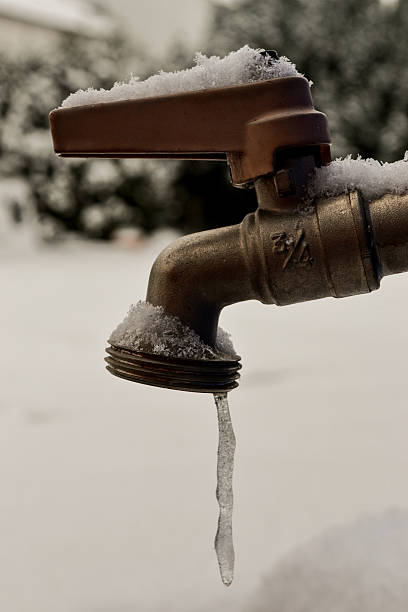How to Avoid Frozen Pipes in Winter: Professional Advice
How to Avoid Frozen Pipes in Winter: Professional Advice
Blog Article
Just about everyone seems to have his or her own theory involving Prevent Frozen Pipes .

Cold weather can damage your pipes, particularly by freezing pipes. Here's just how to avoid it from taking place and what to do if it does.
Intro
As temperatures decrease, the threat of frozen pipelines increases, potentially resulting in pricey repair services and water damage. Understanding how to stop frozen pipes is essential for home owners in chilly climates.
Avoidance Tips
Shielding prone pipes
Wrap pipes in insulation sleeves or utilize warmth tape to safeguard them from freezing temperature levels. Concentrate on pipelines in unheated or exterior areas of the home.
Heating techniques
Maintain interior spaces properly warmed, specifically areas with plumbing. Open cupboard doors to permit cozy air to circulate around pipelines under sinks.
Exactly how to determine frozen pipes
Seek lowered water circulation from faucets, uncommon smells or noises from pipes, and noticeable frost on subjected pipelines.
Long-Term Solutions
Structural changes
Take into consideration rerouting pipelines far from outside walls or unheated areas. Include extra insulation to attic rooms, cellars, and crawl spaces.
Upgrading insulation
Purchase top notch insulation for pipelines, attic rooms, and walls. Proper insulation assists maintain consistent temperature levels and lowers the danger of icy pipelines.
Protecting Outside Pipes
Yard hoses and outdoor taps
Detach and drain pipes yard hose pipes prior to winter season. Set up frost-proof spigots or cover outdoor faucets with protected caps.
Recognizing Icy Pipelines
What causes pipelines to ice up?
Pipes ice up when exposed to temperatures listed below 32 ° F (0 ° C) for extended periods. As water inside the pipes freezes, it increases, taxing the pipeline walls and potentially creating them to rupture.
Risks and damages
Icy pipelines can result in supply of water disruptions, residential or commercial property damages, and costly fixings. Burst pipelines can flood homes and create considerable structural damages.
Signs of Frozen Water Lines
Identifying frozen pipes early can avoid them from rupturing.
What to Do If Your Pipes Freeze
Immediate activities to take
If you suspect frozen pipes, keep taps open to soothe stress as the ice thaws. Utilize a hairdryer or towels taken in hot water to thaw pipelines slowly.
Final thought
Protecting against frozen pipelines calls for positive procedures and fast reactions. By understanding the reasons, indicators, and safety nets, house owners can protect their pipes during winter.
5 Ways to Prevent Frozen Pipes
Drain Outdoor Faucets and Disconnect Hoses
First, close the shut-off valve that controls the flow of water in the pipe to your outdoor faucet. Then, head outside to disconnect and drain your hose and open the outdoor faucet to allow the water to completely drain out of the line. Turn off the faucet when done. Finally, head back to the shut-off valve and drain the remaining water inside the pipe into a bucket or container. Additionally, if you have a home irrigation system, you should consider hiring an expert to clear the system of water each year.
Insulate Pipes
One of the best and most cost-effective methods for preventing frozen water pipes is to wrap your pipes with insulation. This is especially important for areas in your home that aren’t exposed to heat, such as an attic. We suggest using foam sleeves, which can typically be found at your local hardware store.
Keep Heat Running at 65
Your pipes are located inside your walls, and the temperature there is much colder than the rest of the house. To prevent your pipes from freezing, The Insurance Information Institute suggests that you keep your home heated to at least 65 degrees, even when traveling. You may want to invest in smart devices that can keep an eye on the temperature in your home while you’re away.
Leave Water Dripping
Moving water — even a small trickle — can prevent ice from forming inside your pipes. When freezing temps are imminent, start a drip of water from all faucets that serve exposed pipes. Leaving a few faucets running will also help relieve pressure inside the pipes and help prevent a rupture if the water inside freezes.
Open Cupboard Doors
Warm your kitchen and bathroom pipes by opening cupboards and vanities. You should also leave your interior doors ajar to help warm air circulate evenly throughout your home.

Hopefully you liked our part about How to prepare your home plumbing for winter weather. Thank you so much for finding the time to read through our blog. Do you know another person who is fascinated by the subject? Feel free to share it. Thank you for your time. Don't hesitate to pay a visit to our blog back soon.
Contact Report this page